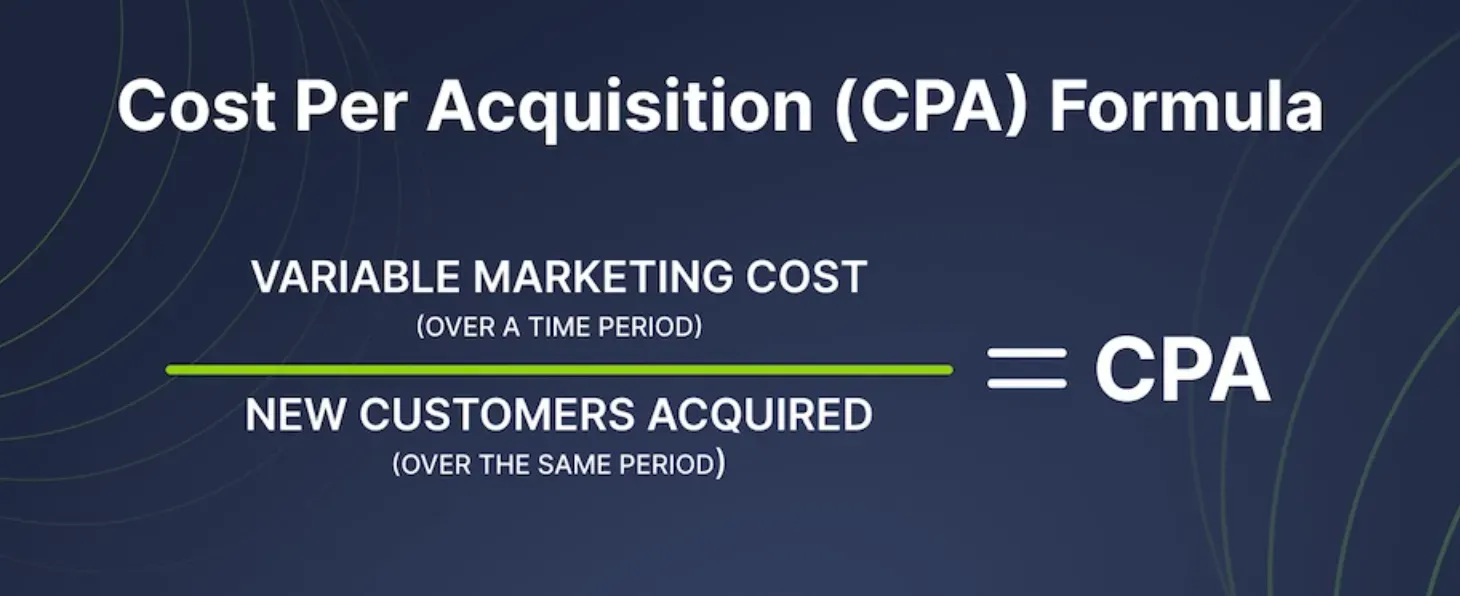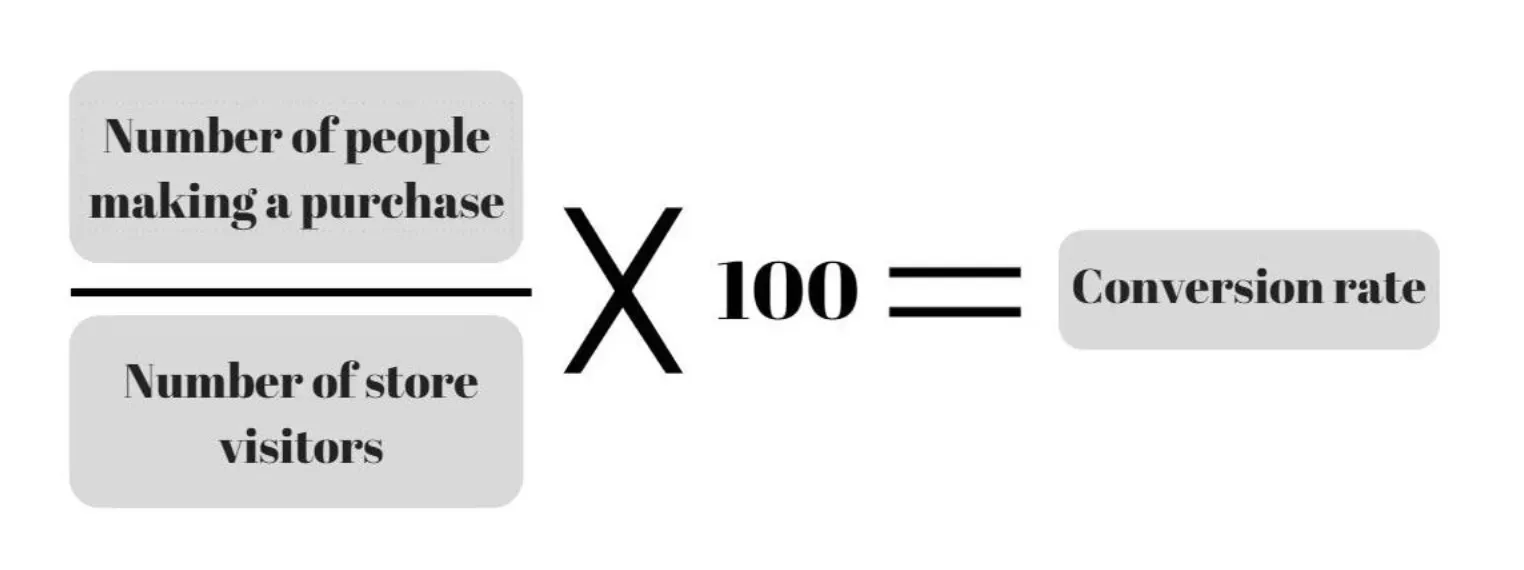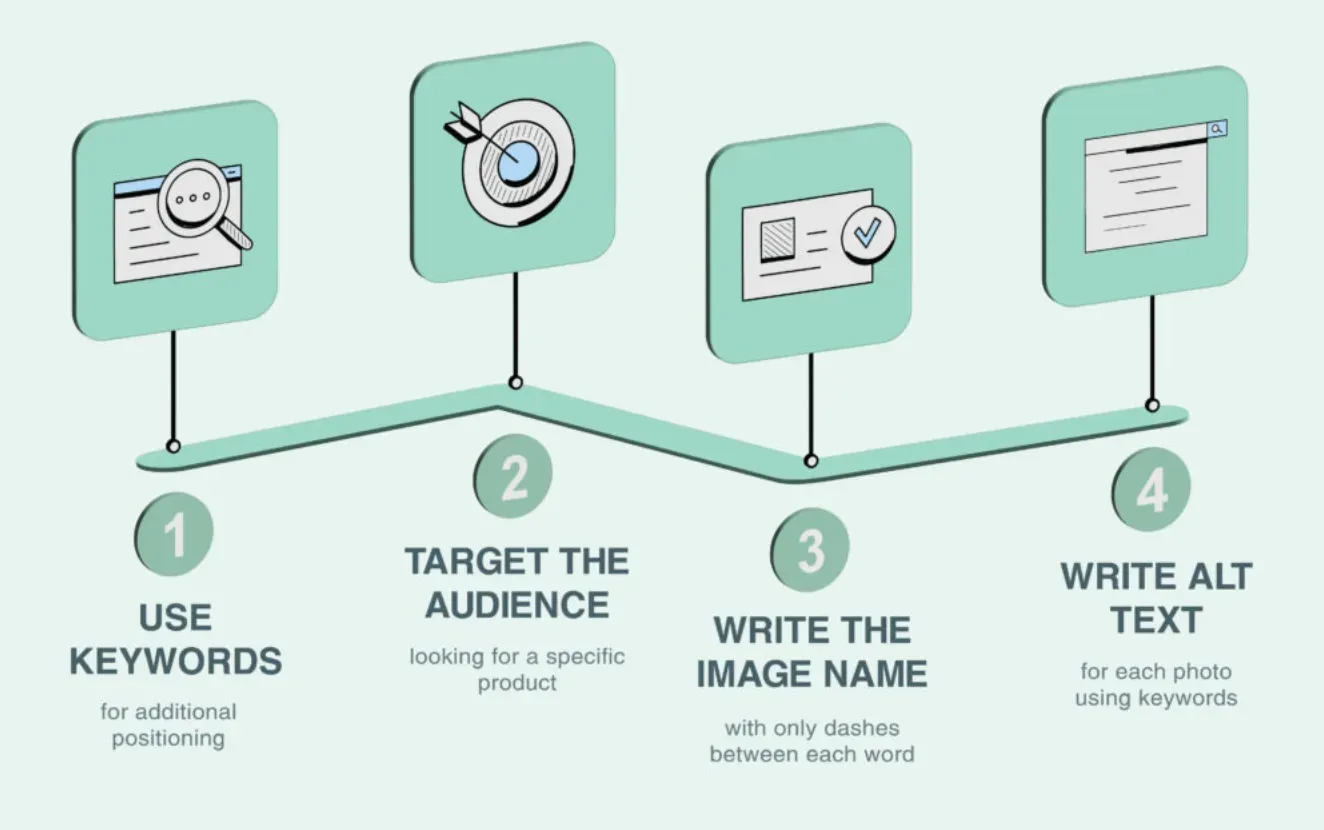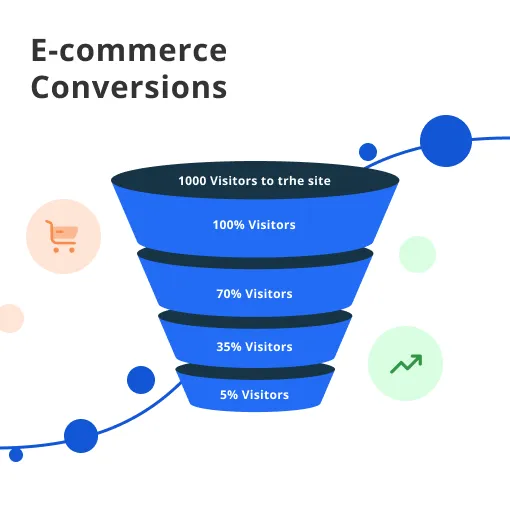What are eCommerce Conversions?
eCommerce conversions refer to the desired actions that visitors take on an online store's website that align with the business's goals.
While the primary focus is often on sales, conversions can also include other actions like newsletter sign-ups, account registrations, or social media follows.
Conversions are crucial for measuring the effectiveness of an online store's marketing and sales efforts, as well as for generating revenue.
By optimizing conversion rates and tracking key metrics, businesses can enhance their online presence and drive success in the competitive eCommerce landscape.
Important Conversion Metrics

Conversion Rate
This metric measures the percentage of visitors who have completed a desired action, such as making a purchase, compared to the total number of website visitors.
Average Order Value (AOV)
AOV represents the average amount spent per transaction by customers on your online store.
Monitoring AOV helps evaluate the effectiveness of upselling and cross-selling strategies.
Suggested Reading: Average Order Value: Elements & Strategies
Return on Investment (ROI)
ROI quantifies the profitability of your marketing campaigns by comparing the amount of money spent on marketing efforts to the revenue generated.
This measure helps determine the success of your investment in driving conversions.
Cost per Acquisition (CPA)

CPA calculates the average cost of acquiring a new customer. It considers the total marketing costs divided by the total number of new customers acquired during a specific period.
Monitoring CPA helps optimize marketing budgets and assess the effectiveness of acquisition strategies.
Click-Through Rate (CTR)
CTR measures the percentage of users who click on a specific link or advertisement out of the total number of users who view it.
It reflects the success of your online ads, email campaigns, or other clickable content in driving traffic to your website.
Cart Abandonment Rate
This metric measures the percentage of users who add items to their shopping cart but leave the website without completing the purchase.
It provides insights into the effectiveness of your checkout process and can help identify potential barriers to conversion.
How to Calculate eCommerce Conversion Rate?

Calculating your eCommerce conversion rate is like peering into a crystal ball to understand how well your website is performing in driving conversions.
To calculate your eCommerce conversion rate, you can use the following formula:
Conversion Rate = (Number of Conversions / Number of Visitors) * 100
For example, if your eCommerce site received 1,000 visitors in a month and had 50 conversions (or sales), your conversion rate would be:
Conversion Rate = (50 / 1,000) * 100 = 5%
This means that 5% of your website visitors converted into customers.
How to Increase eCommerce Conversion
Sure, here's some more explanation for each of the headers:
Make Site Navigation Easier
Simplify your website's navigation so that users can easily find what they're looking for.
Use clear and intuitive menus, categorize products effectively, and include search functionality to help users navigate your site quickly and efficiently.
Optimize Call-to-Action (CTA)

Your CTAs should be visually appealing, easily noticeable, and persuasive. Use action-oriented words to prompt users to take the desired action, such as "Buy Now," "Add to Cart," or "Subscribe."
Place CTAs strategically throughout your website, especially on product pages and in the checkout process.
Design Creative Visuals
Use appealing visuals to showcase your products and grab the attention of potential customers.
High-quality product images, lifestyle photos, and videos can help users visualize your products and increase their desire to purchase.
Consider incorporating interactive elements like 360-degree views or product demos to engage users further.
AB Testing
AB testing involves creating two versions of a webpage or element and then testing them to determine which version performs better.
This can help you optimize your website and improve conversion rates by testing different layouts, colors, headlines, or CTAs to see which variations resonate best with your audience.
Write Detailed Content

Provide comprehensive and accurate product descriptions that address customer pain points, highlight product features and benefits, and answer common questions.
Well-written and informative content can build trust, enhance the user experience, and help potential buyers make informed purchasing decisions.
User-Friendly eCommerce Website
Focus on creating a seamless and user-friendly experience for your customers. Ensure your website loads quickly, has a responsive design that adapts to different devices, and offers easy-to-use navigation and search functionalities.
Simplify the checkout process by minimizing steps, reducing form fields, and offering guest checkouts.
Social Proofing
Display social proof elements such as customer reviews, ratings, testimonials, and user-generated content.
People tend to trust the experiences and opinions of others, so showcasing positive feedback and endorsements can boost credibility and persuade potential customers to convert.
Use Conversion Triggers

Create a sense of urgency or scarcity to drive conversions. Offer limited-time promotions, exclusive discounts, or free shipping for a limited period.
Display countdown timers or badges indicating low stock levels to encourage users to take immediate action and make a purchase.
Include a Chat Option
Implement a live chat or chatbot feature to provide real-time assistance to customers.
This allows them to ask questions, get personalized recommendations, or address any concerns they may have, which can enhance the overall shopping experience and increase the likelihood of conversion.
Frequently Asked Questions (FAQs)
How can A/B testing help improve eCommerce conversion rates?
A/B testing allows you to compare two versions of a webpage or element to see which performs better.
By testing different variations of your website, you can identify the most effective design, layout, or copy that drives higher conversion rates.
How can you improve eCommerce conversion on my website?
To improve eCommerce conversion, focus on optimizing your website navigation, designing effective CTAs, writing compelling content, incorporating social proof, and implementing conversion triggers.
What are some effective conversion triggers?
Effective conversion triggers include limited-time promotions, free shipping offers, countdown timers, personalized recommendations, and testimonials from satisfied customers.
How can you optimize my website's call-to-action (CTA)?
To optimize your CTA, use clear and action-oriented language, make it visually prominent, place it strategically on your website, and test different variations to see what resonates best with your audience.
Why is social proof important for eCommerce conversion?
Social proof is important because it provides evidence that others have had positive experiences with your products or services. It builds trust and credibility, which can significantly influence purchasing decisions.

